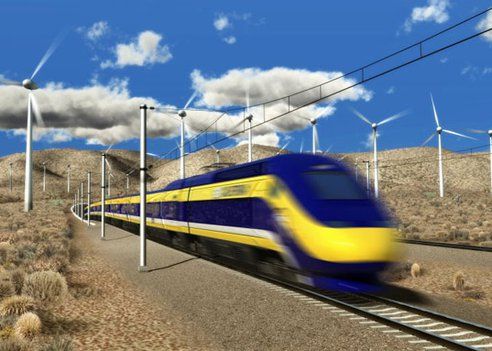
CA HSR, RIP (kind of)
February 18, 2019
So just as high speed rail gets a political lift via the Green New Deal, the one active effort bites the dust in California. Read the link though, it's not entirely dead - Newsom committed to a strange little stretch in Central Valley from Merced to Bakersfield that's already partly constructed, and put off the rest for another (undefined) time. Some Amtrak connection to Central Valley could end up making a mixed HSR/normal line run from the Bay Area to LA.
Still, it's depressing if not surprising (I've been hesitant about it for a while). Vox tries to explain why HSR has done poorly, a combination of cost overruns, delays, and political overrides of logic, but that's at best a first-level explanation. Why are cost overruns, delays and politics so much worse for American HSR than in other countries?
Maybe our love affair with cars means that everything else gets second-best efforts. There was also some argument making its way around several years ago that English-speaking advanced economies have far more expensive public infrastructure than in comparable non-English speaking countries (couldn't find a good link on a quick search). The reasons given that I recall were stubborn labor unions, which I find a doubtful distinction, and greater legal costs, which also seem overblown to me. The real cause isn't clear.
Anyway I view the HSR failure as a similar disappointment to each carbon-capture project that bites the dust, usually for the same reason of cost overruns and delays. We need these programs to work.
Still, HSR isn't entirely dead, and alternatives like high-speed autonomous EVs in dedicated lanes could provide similar benefits. And people keep trying CCS, maybe it will eventually work as something we desperately need in order to generate large amounts of negative carbon emissions.
UPDATE - some good analysis from Scott Lemieux:
Still, it's depressing if not surprising (I've been hesitant about it for a while). Vox tries to explain why HSR has done poorly, a combination of cost overruns, delays, and political overrides of logic, but that's at best a first-level explanation. Why are cost overruns, delays and politics so much worse for American HSR than in other countries?
Maybe our love affair with cars means that everything else gets second-best efforts. There was also some argument making its way around several years ago that English-speaking advanced economies have far more expensive public infrastructure than in comparable non-English speaking countries (couldn't find a good link on a quick search). The reasons given that I recall were stubborn labor unions, which I find a doubtful distinction, and greater legal costs, which also seem overblown to me. The real cause isn't clear.
Anyway I view the HSR failure as a similar disappointment to each carbon-capture project that bites the dust, usually for the same reason of cost overruns and delays. We need these programs to work.
Still, HSR isn't entirely dead, and alternatives like high-speed autonomous EVs in dedicated lanes could provide similar benefits. And people keep trying CCS, maybe it will eventually work as something we desperately need in order to generate large amounts of negative carbon emissions.
UPDATE - some good analysis from Scott Lemieux:
The crucial underlying problem here is America’s fractured and extraordinarily high-veto-point system, which inevitably leads to substantial inefficiencies and inequities unless (as with roads) the support for them is extremely broad-based and the opposition very weak. Any remotely rational plan would have started with a San Diego-to-LA or an LA-Bakersfield-SF line and proceeded from there, but instead so many local interests had to be bought off that it became white elephant done in a completely irrational sequence, and collapsed. And that’s in one of the most favorable political contexts for such a project.
Another related problem is that NIMBYISM has a serious presence on the left, which can be seen in the fact that the Green New Deal completely ignores the critical need for upzoning and increased housing density. These are both very serious issues.


